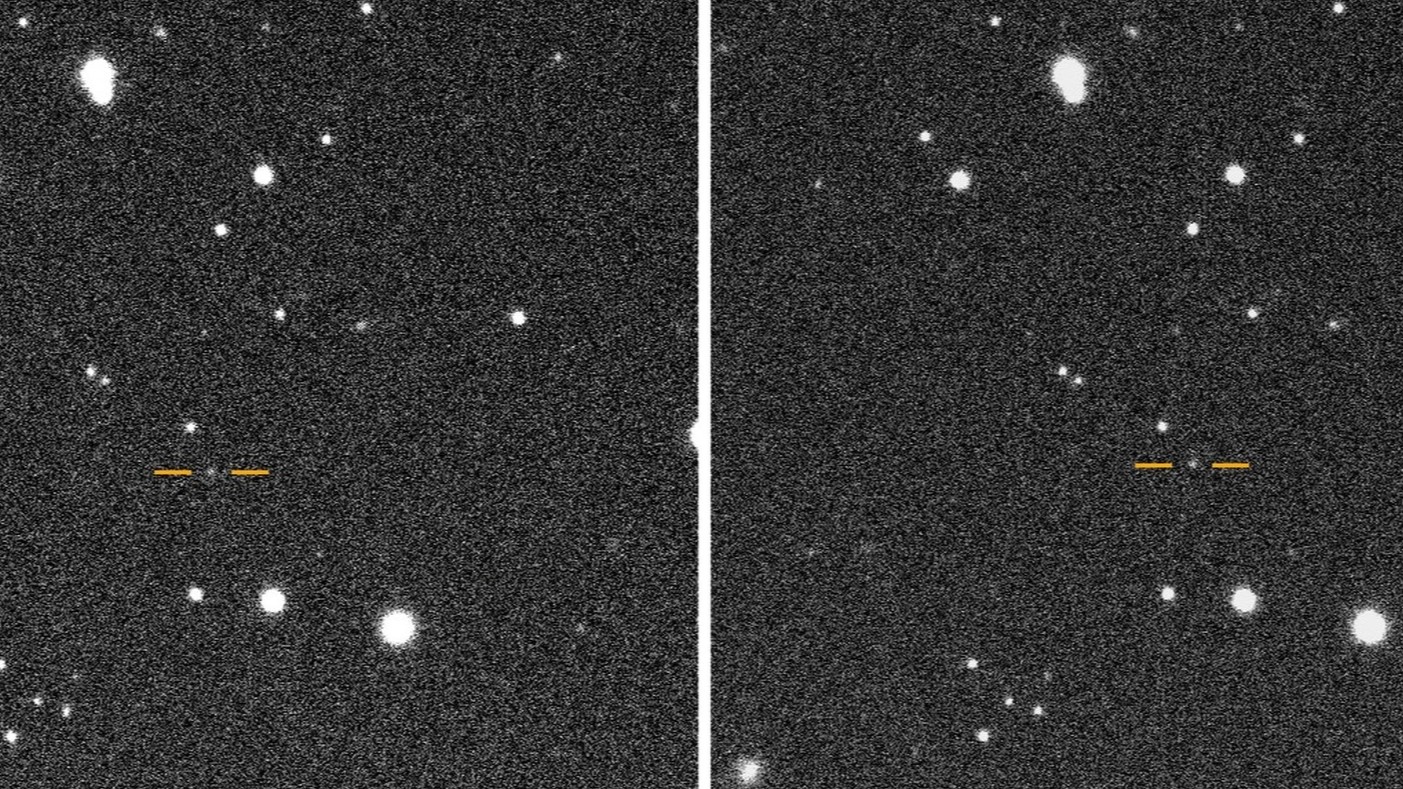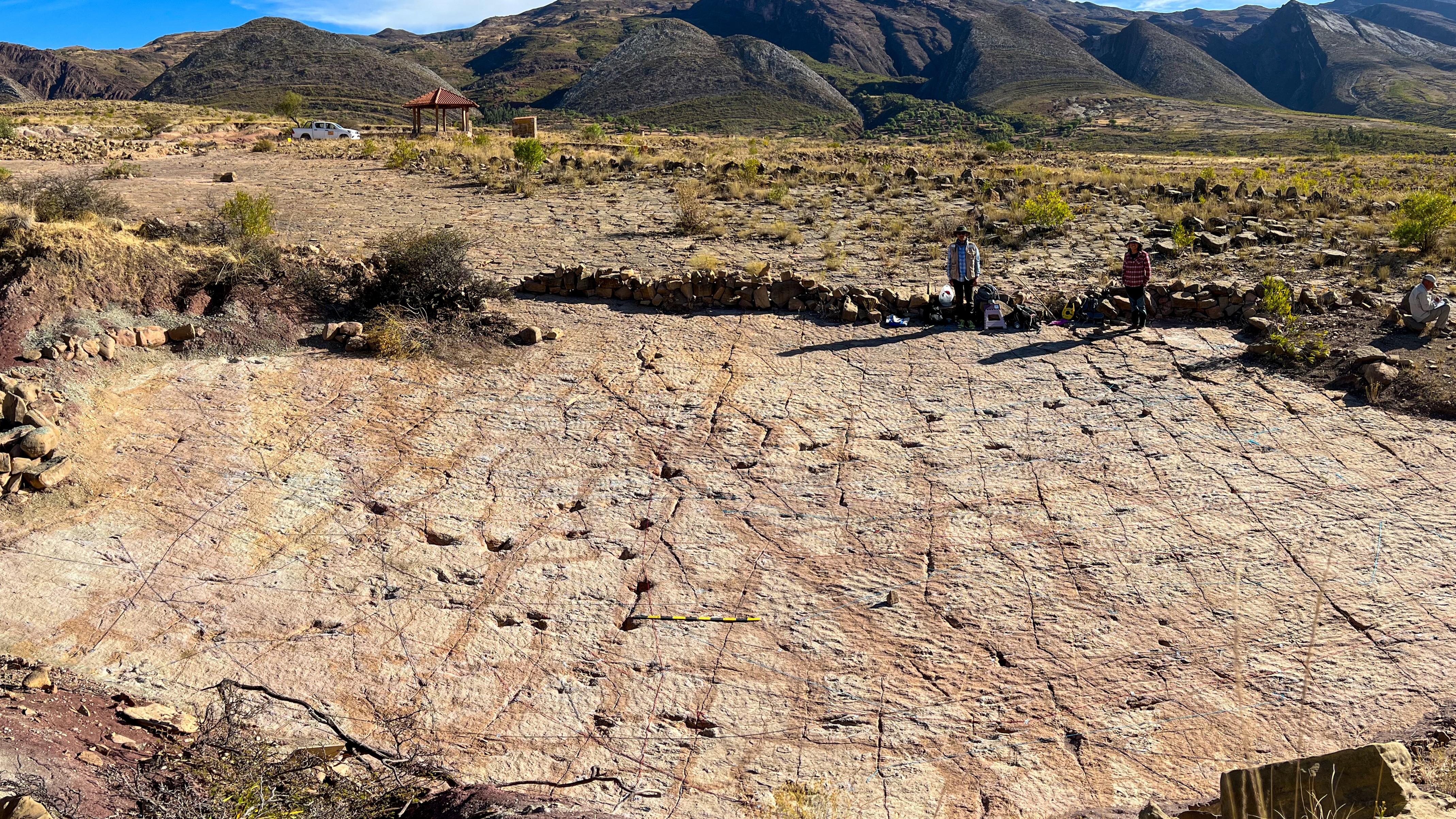Astronomers discover skyscraper-size asteroid hidden in sun's glare — and it's moving at a near-record pace
The newly discovered "twilight" asteroid, 2025 SC79, was obscured by the sun's glare until an astronomer pointed the Dark Energy Camera at it, highlighting the potential dangers of unseen asteroids.

Astronomers have discovered a 2,300-foot-wide (700 meters) asteroid hidden in the sun's glare, and it’s whizzing through our solar system at a near record-breaking pace.
The skyscraper-size asteroid, named 2025 SC79, loops around the sun once every 128 days, giving it the second-fastest asteroid orbit in the solar system. It is also only the second known space object that orbits entirely inside of Venus' orbit, occasionally even crossing the orbit of Mercury.
Scott Sheppard, an astronomer at the Carnegie Science research institute in Washington, D.C., first spotted 2025 SC79 on Sep. 27. The asteroid was obscured by the sun's glare, making it exceptionally difficult to observe, according to a statement released by Carnegie Science. Spotting hidden asteroids like 2025 SC79 is important to ensure that no potentially hazardous space rock sneaks up on our planet without us noticing.
"The most dangerous asteroids are the most difficult to detect," Sheppard said in the statement. "Most asteroid research finds these objects in the dark of night, where they are easiest to spot. But asteroids that lurk near the Sun can only be observed during twilight — when the Sun is just about to rise or set. If these 'twilight' asteroids approach Earth, they could pose serious impact hazards."
Asteroids like 2025 SC79 are definitely worth keeping an eye on. To put its 2,300-foot diameter in context, the so-called "city-killer" asteroid 2024 YR4 discovered earlier this year is only around 180 feet (55 meters) wide, and that has the potential to release 500 times more energy than the atomic bomb that destroyed Hiroshima if it were to hit Earth (don't worry, it almost certainly won't).
Sheppard discovered 2025 SC79 using the Dark Energy Camera on the National Science Foundation's (NSF) Blanco 4-meter telescope. The asteroid's existence was then confirmed with observations from the NSF's Gemini telescope and Carnegie Science's Magellan telescopes, according to the statement.
This is the second super speedy asteroid spotted by Sheppard and his colleagues in recent years, having also discovered the fastest known asteroid in 2021. That object, named 2021 PH27, orbits the sun in 113 days, making it just 15 days quicker than 2025 SC79. The only object in the solar system with a faster orbital period is the planet Mercury, which completes an orbit of the sun in 88 days.
Get the world’s most fascinating discoveries delivered straight to your inbox.
2025 SC79's orbit has now taken it behind the sun, so it won't be visible for several months. Researchers will attempt further observations in the future to learn more about the object, which is ultimately another piece of the galactic puzzle that helps astronomers understand how our solar system and its potential asteroid-shaped threats evolved.
"Many of the Solar System's asteroids inhabit one of two belts of space rocks, but perturbations can send objects careening into closer orbits where they can be more challenging to spot," Sheppard said. "Understanding how they arrived at these locations can help us protect our planet and also help us learn more about Solar System history."

Patrick Pester is the trending news writer at Live Science. His work has appeared on other science websites, such as BBC Science Focus and Scientific American. Patrick retrained as a journalist after spending his early career working in zoos and wildlife conservation. He was awarded the Master's Excellence Scholarship to study at Cardiff University where he completed a master's degree in international journalism. He also has a second master's degree in biodiversity, evolution and conservation in action from Middlesex University London. When he isn't writing news, Patrick investigates the sale of human remains.
You must confirm your public display name before commenting
Please logout and then login again, you will then be prompted to enter your display name.


